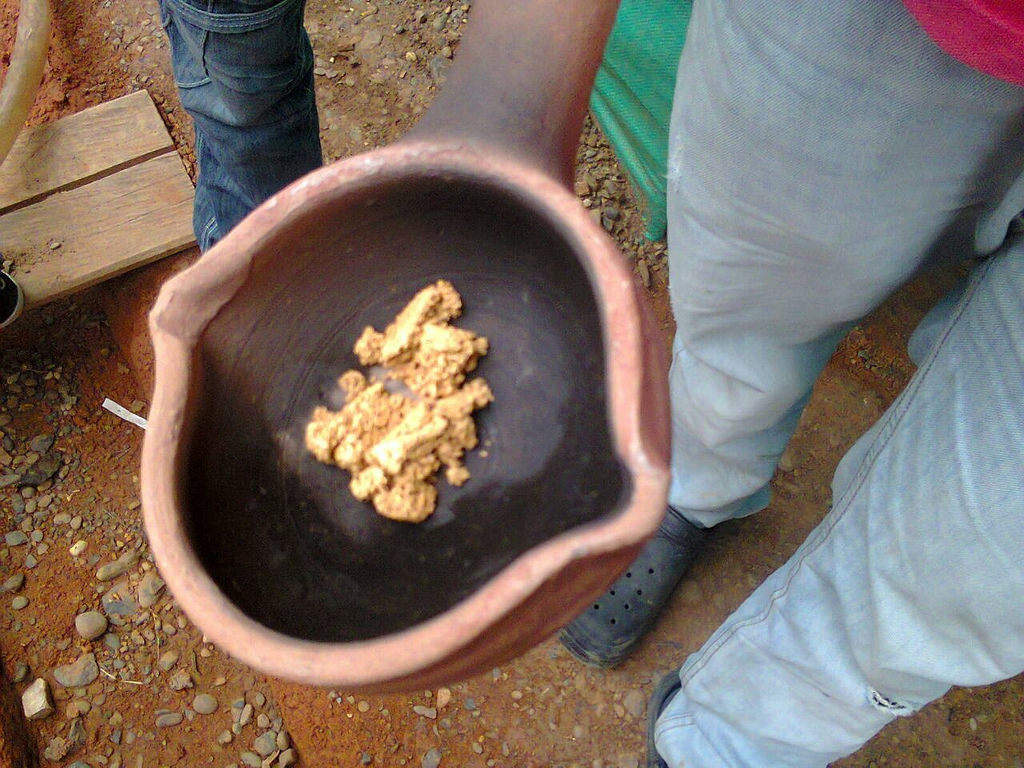
Bullish gold prices in recent years have attracted criminal elements, ranging from highly organised criminal gangs to small scale informal miners, all keen to cash in on the popular commodity.
In South America in particular, a lack of monitoring or prosecuting illegal mining, together with endemic corruption, has resulted in gold being perceived as a low-risk-high-reward way to make money.
This is a problem that is growing in both scale and prevalence, creating significant challenges not only within South America, but for any company that produces, buys, sells and even finances gold-related projects.
“Many believe the major drug trafficking organisations in Colombia make all their money from the production of cocaine and trafficking,” says Jesse Spiro, global head of threat finance and emerging risks for Thomson Reuters Financial & Risk.
“However, we learned that illegal gold mining and the extortion that is baked into the system and targeting legitimate miners, both large and small, is extremely profitable, in some cases even more so than coca production.”
A whitepaper entitled Illegal mining in South America and financial risk – Taking the shine off gold, co-authored by Spiro and his colleague Brian Huerbsch, explains that the Revolutionary Armed Forces of Colombia, or FARC, a Colombian guerrilla group, obtains an estimated 20% of its funding through illegal gold mining. Whereas in Peru, annual illegal gold exports are double that of cocaine, amounting to around $3bn.
In addition to Colombia and Peru, in the latter of which it is estimated 95% of illegal gold is mined from one region, the problem is prevalent in Bolivia, Brazil, Ecuador and Venezuela.
Assessing risk
Spiro is an expert on financial crime, anti-money laundering, enhanced due diligence and third-party risk and is also a member of the non-profit Intelligence and National Security Alliance (INSA).
He says that illegal mining presents varying risks for locals, governments, miners and companies involved in the gold supply chain.
Due to the use of mercury and lack of adherence to environmental standards, illegal mining is hugely detrimental to the environment. This, according to Spiro, creates additional costs to the livelihoods of locals and to regional industry, and “ultimately to the security of the state and financial system.”
One particular problem is so-called ‘gold laundering’. Just as with money laundering, illegal miners and organised criminals try to hide the illicit origins of their gold by mixing it with legitimately mined gold, to then introduce it into the legal international gold market.
For refiners and others, this makes it almost impossible for international gold-buying companies to differentiate between legal and illegal gold exports.
Corruption is another problem, evident in the forging of official documents and bribery.
Increasing regulation
As the problem of illegal gold mining fails to subside, the regulatory – and increasingly reputational – risk grows stronger.
“It’s definitely there – if you or your third party engages in business with an illegal gold mining company or you sell illegally mined gold, then you are running afoul of basic Know Your Customer (KYC) and Anti-Money Laundering (AML) regulations,” says Spiro.
He adds that there are many different actors that can become tainted, including lawyers and agents, authorities and officials, refiners, transporters, exporters and retailers.
The key regulatory frameworks that companies should be aware of include: EU Conflict Minerals Regulation; OECD Anti-Bribery Convention; OECD Due Diligence Guidance for Responsible Supply Chains of Minerals from Conflict-Affected and High-Risk Areas; as well as the US Dodd-Frank Act – Conflict Minerals Rule.
“Companies must comply with basic regulatory norms like KYC and AML,” says Spiro. “This means knowing your customer’s customer, and taking into account the reputation of the company, the country and the industry you’re doing business in,” says Spiro.
The report highlights that the global regulatory landscape has changed drastically over the past decade. It notes that fines and enforcement actions for non-compliance have grown ‘enormously’, and the amount of enforcement actions has ‘mushroomed’ in tandem with the fines.
“It’s about managing risk to the full extent of your company’s ability to do so; to be compliant the company is required to demonstrate it has taken all appropriate/required measures,” he adds. “Doing so successfully inevitably mitigates risk, however, unfortunately, ending risk completely isn’t a current reality.”
And while there are many certification schemes and technologies, including blockchain, purporting to make firms compliant, companies need to be careful they are not just ‘greenwashing’, so to speak.
“You need to be wary of certification schemes and ensure you only rely on the most authoritative and respected certifications,” says Spiro.
Many are good intentioned, but not enforced on the ground. Fairmined and the Fairtrade Standard for Gold and Associated Precious Metals for Artisanal and Small-Scale Mining are two key certifications that have gained a solid reputation.
Growing problem
Despite reports on the impact of illegal gold being produced more regularly now than before, Spiro says the reputational risk for companies that become embroiled in illegal gold mining could be higher and ‘should be higher’. In fact, increased action from outside of South America, where the issue is well known, needs to happen.
“More thought leadership on this issue is needed, as well as more awareness in key markets like Europe and North America,” he says. “This issue still hasn’t received the level of attention it deserves in major financial markets.”
Illegal gold mining is a problem that is unlikely to be solved in South America soon due to the continent’s complex political and physical landscape.
And while companies themselves could put pressure on governments to make policy changes, Spiro says that this will only be as successful as the state’s ability to enforce them, which is not strong.
“Holding companies to higher standards and stricter rules regarding this industry would be more effective,” he adds.



